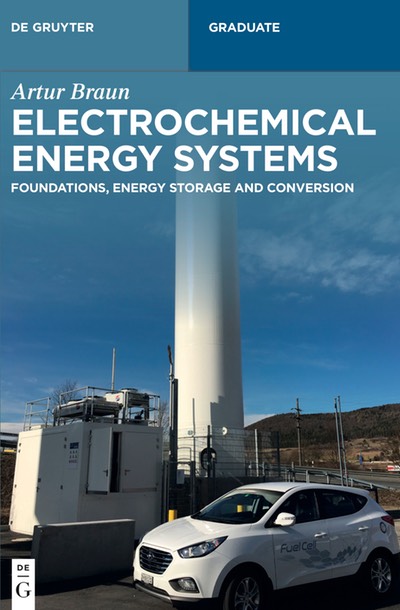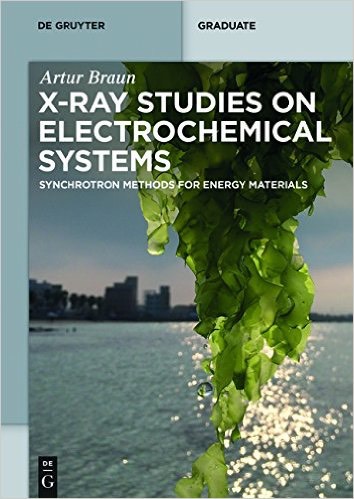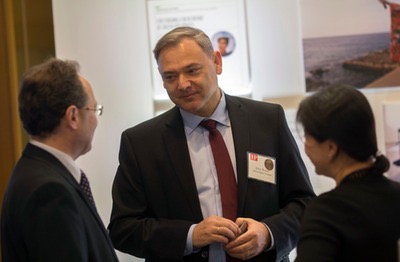I am a German Diplom-Physiker from RWTH Aachen and did my diploma thesis at Forschungszentrum Jülich with Matthias Wuttig and Harald Ibach - after an internship on electroceramics at Philips Research Labs. My experimental work in Jülich on the structure, growth and magnetism of thin Ni films led me to develop a handy, general mathematical model which allows the prediction of the direction of the magnetic moment of thin epitaxial metal films as a function of substrate lattice constant, thickness and elastic constants of the film material. In connection with this I developed a simple mathematical expression that allows to convert film thickness from monolayers into Angstrom. Those of you who know about the concept of the epitaxial Bain path and the relaxation of epitaxial strain with increasing film thickness will immediately grasp that this is not a trivial problem.
In the spirit of Physicist A. Sommerfeld (who worked at RWTH Aachen on lubricants and on brake pads) and Mathematician C.F. Gauss, who both worked on problems that were relevant for society, I chose to carry our my PhD thesis research on an industrial project in Switzerland at the Paul Scherrer Institut under the supervision of Alexander Wokaun and Rüdiger Kötz. The project involved the development of an electrochemical, carbon based capacitor that was supposed to replace conventional capacitor racks in Swiss locomotive trains (Swiss PPM project Lok 2000), and thus reduce their weight by several tons. I think today the locomotives have still the heavy capacitor benches ("... die Kaufleute haben das totgerechnet ..."), but we succeeded to develop and demonstrate the supercapacitor with the highest power density ever reported. My part in the project was the study of the thermal gas phase oxidation of glassy carbon electrodes, which is summarized in about a dozen publications. In this respect, I am cool to disclose that I - then standing already on the shoulders of giants - dealt with graphene sheets years before Geim and Novoselov even started their work on it. Anyway, here again my experimental work led me to develop a mathematical model which exact describes the porous film thickness evolution as a function of materials and process parameters.
The conjecture of this problem with mathematical principles known from population dynamics pointed me to the intriguing Lambert W function, and to Keith M. Briggs, who had derived the Generalized Lambert W function. For the derivation of the model I received 1000 Swiss Francs cash award from PSI, and for the entire thesis work the Dr.sc.nat. doctoral degree from ETH Zürich. I somehow could implement W into Matthews' and Blakeslee's dislocation equation, publish it together with the help of some great guys and thus get a prestigious low Erdös number of 3.
Some Americans (and others) consider you as Einstein's classmate when you have a degree from ETH Zürich. After - unfortunately only for a few weeks - working for Peter Böni as a neutron reflectometry beamline scientist at the Laboratory for Neutron Scattering in Switzerland, I followed a call from Elton J. Cairns to Berkeley for a postdoc fellow position on lithium battery research with synchrotron radiation. I was hired because of my combined experience with small angle x-ray and neutron scattering and electrochemistry from my PhD research in Switzerland. At Berkeley I developed in-situ and operando electrochemical methods combined with synchrotron x-ray scattering and spectroscopy. The real exciting part of my appointment in Berkeley was that I was working in a battery group and also in a protein spectroscopy group, the combination of which gave me the unique opportunity to see analogies in the redox chemistry between electrochemical energy storage and conversion such as in batteries, and the chemical principles of photosynthesis. I did great stuff back then, such as in-situ ASAXS, XANES, EXAFS and anomalous XRD on an operating lithium battery cell, and even X-ray Raman spectroscopy on lithium and STXM on lithium manganate spinel. With the work from these two years I published a handful of papers, all of which combining battery research and synchrotron radiation. The traumatic events of September 11 in 2001 made my family and me go low profile and move from the cosmopolitan San Francisco Bay Area to rural Kentucky.
In Lexington Kentucky I spent four years on the molecular structure of carbon aerosols, such as diesel soot and wood smoke. These aerosols can be hazardous for human health, and they may also have impact on regional and global climate. We had to find out which combustion sources, which fuels contribute to which extent to air pollution in say urban areas. NEXAFS spectroscopy turned out to be a very effective method for the molecular speciation and source apportionment of soot. Scientifically this was a very fruitful time; we published around 20 papers on that topic. A Physicist by training, with a PhD in electrochemistry, my scientific interests are actually quite broad. You will find the center of gravity in the application of synchrotron and neutron methods to materials for energy and environmental applications. At the top of the field in environmental sciences with NEXAFS, I left it and moved back to Switzerland to start research on ceramic fuel cells - a field again entirely new to me.
At Empa in Switzerland I had the opportunity to become a Marie Curie Fellow and a Group Leader and extend my research on fuel cells to research on photoelectrochemistry, self-assembly, and nano-bio interfaces.







